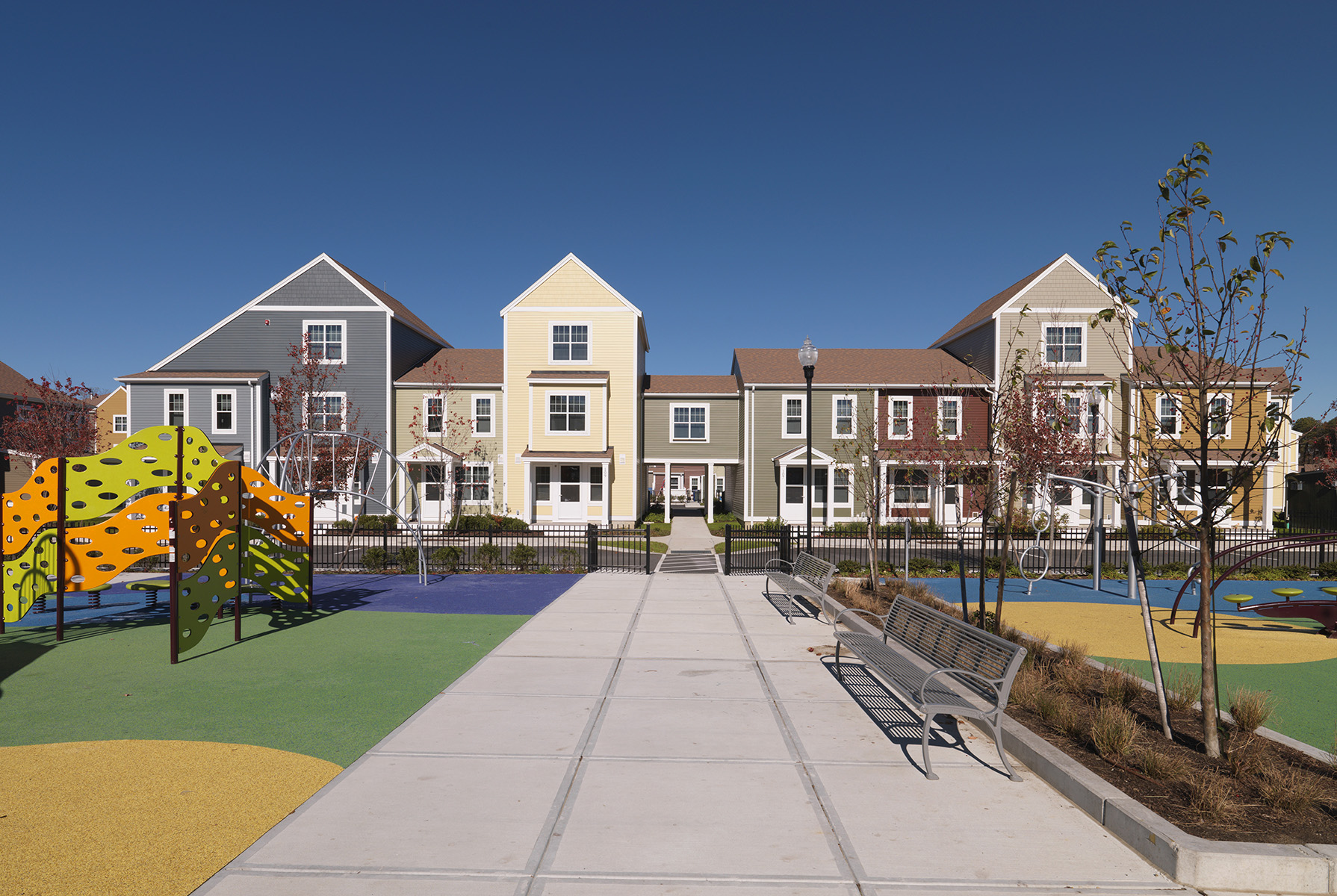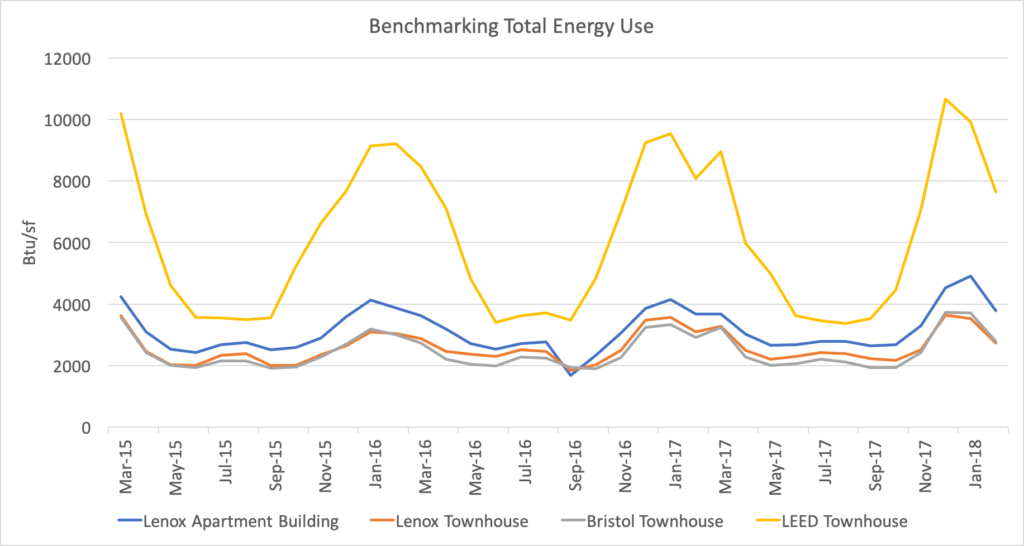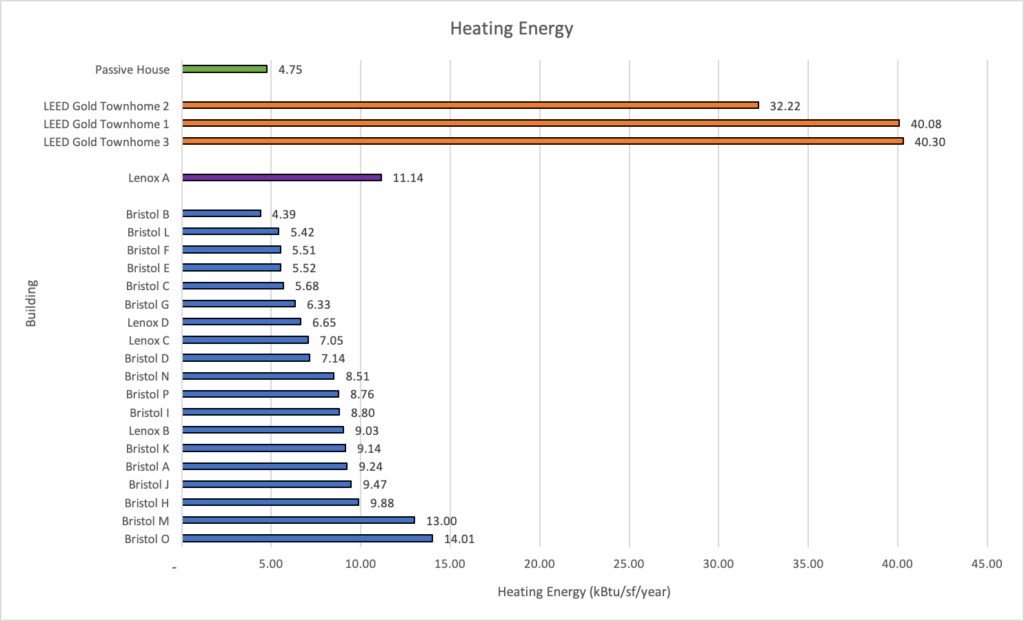

Passive House Inspired Affordable Housing
Total Cost: $73 million
Affordability: 0-60% AMI rental units
Bristol Commons & Lenox Green 
Location: Taunton, MA • Units: 160 Total (98 townhomes, 8 duplexes, and 54 apartment units) • Developed by: Trinity Financial in conjunction with the Taunton Housing Authority • Managed by: Trinity Financial
PROJECT BACKGROUND
Fairfax Gardens, built in 1951, was an isolated, 150-unit barracks-style public housing development in the middle of a low-density, single-family neighborhood in Taunton, MA. Due to limited operational resources over the years, the development’s infrastructure, utilities, and many building components were in poor condition and in need of complete replacement. The buildings were neither energy efficient nor accessible, the units were cramped and much smaller than current space standards dictate, and mold, pests, and deteriorated finishes were problems throughout. The distressed conditions at Fairfax Gardens not only negatively impacted residents’ health and quality of life, it also brought down the property values of nearby homes.
The award of the HOPE VI grant allowed for the complete demolition and reconstruction of the Fairfax Gardens property (formally renamed Lenox Green post construction), as well as the development of a vacant, transit- oriented parcel in downtown Taunton (Bristol Commons). Achieving high levels of energy efficiency was a priority of the project from the start, and a team of professionals skilled at high performance housing design and construction was assembled to achieve that goal.

Passive design philosophies, such as super insulation and airtight construction of the building envelope and very high efficiency mechanical and ventilation systems, were employed to achieve buildings that would consume approximately 1/10th of the heating energy of conventional construction. Simplicity of operations and maintenance, affordability, constructability at scale, dependability, and low utility expenses were balanced with the goal of deep energy use reductions.
FUNDING SOURCES:

• $22 Million HOPE VI Revitalization Grant from the US Department of Housing and Urban Development (HUD)
• LIHTC Funding from the Massachusetts Department of Housing and Community Development
• Other public funding sources and private equity
DESIGN APPROACH:

• Super insulated, air sealed exterior wall and roof construction
• High performance windows
• Heat recovery ventilation systems (HRV)
• High efficiency heating and cooling equipment (air source heat pump and valance radiant heating/cooling technology)
• “Solar Ready” design for further reductions through integration of solar thermal or photovoltaic technology
PERFORMANCE RESULTS
New Ecology, Inc. has been tracking and benchmarking the performance of this development to understand the energy impact of the revitalization. The results below affirm the potential for passive approaches to achieve deep reductions in energy use in affordable housing.



GREEN CERTIFICATIONS:

• Enterprise Green Communities (EGC) Certified
• ENERGY STAR Homes Certified

